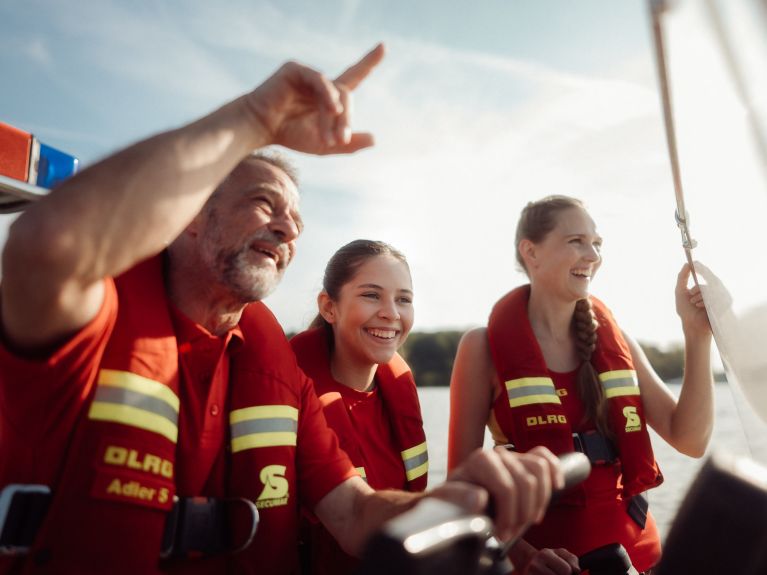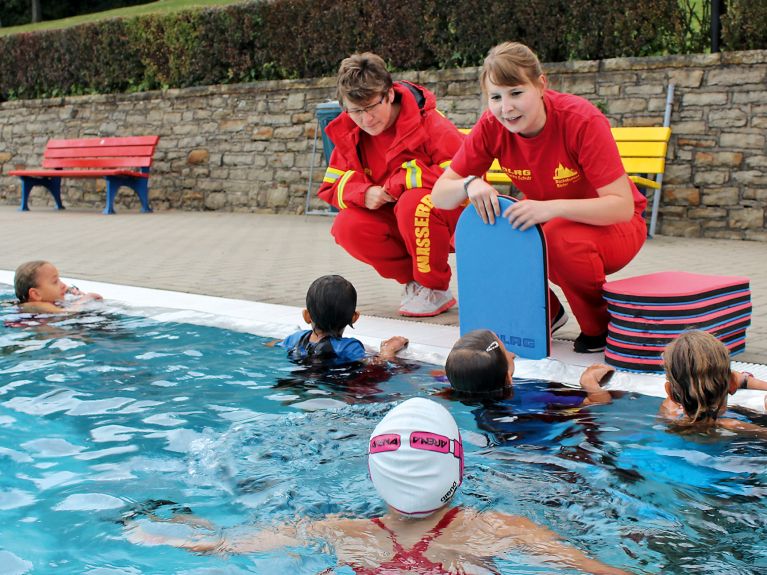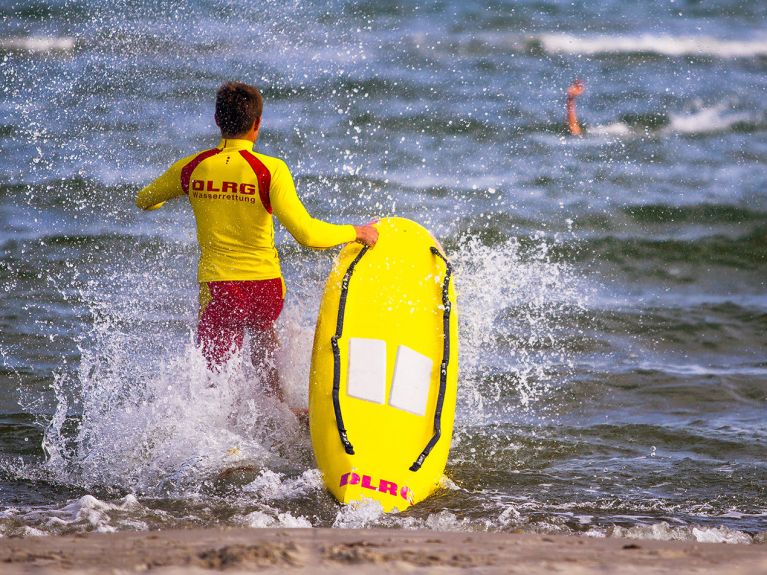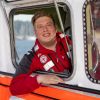Rescuer in the water
“A second family”: Mirjam Wennemar of the German Life-Saving Association (DLRG) talks about her voluntary work.

“I’m mainly involved in two areas at the DLRG: I teach children to swim and I work with the water rescue service. I’m currently teaching a group of 20 children to swim in the swimming pool. I also work at the central DLRG station in Berlin at the weekends. This is where all DLRG Berlin water rescue operations are coordinated.

As a team member, I manage rescue operations from here, make sure our boats are in the right place at the right time and maintain contact with the fire brigade and police. It’s a responsible job that I really enjoy doing.
We can save lives by providing rapid assistance.
My involvement in the DLRG began when I was a child and it remains an important part of my life to this day. In Germany, 20 per cent of children between the ages of six and ten can’t swim – an alarming fact. Every child that learns to swim with us means an improvement in safety. The aim is to prevent drowning and teach children how to stay safe in the water.

The water rescue service is something I feel strongly about because we can save lives by providing rapid assistance. I particularly remember the missions where we rescued children from drowning. For me, this illustrates again and again just how important our work is.

My voluntary work gives me an incredible amount in return – be it the great community in the DLRG, which is like a second family to me, or the gratitude of the people we’ve been able to help. At the DLRG I’ve also learnt to take on responsibility, lead teams and keep a cool head in difficult situations.”
German Life-Saving Association (DLRG)
With more than 1.9 million members and sponsors, the DLRG is the largest voluntary water rescue organisation in the world. Its work includes giving swimming instruction, training lifeguards, educating people about water hazards and disaster control. More than 42,000 lifeguards work over 2.5 million hours every year to ensure the safety of swimmers and water sports enthusiasts.


